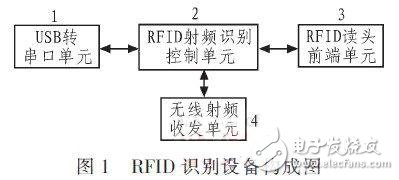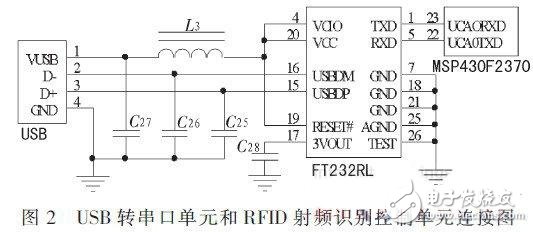In order to solve the problem that the wireless sensor network usually runs in an environment where people cannot or are inconvenient to approach, and energy cannot be replaced, the design uses a single chip MSP430F2370 chip and a small number of peripheral circuits to form a complete measurement system. Because it makes full use of the internal resources of the MCU, the system hardware and software design are minimized, and it has the characteristics of high recognition reliability, strong anti-interference ability, low cost and small size. It can identify electronic labels of various protocol standards such as ISO15693, ISO14443A, ISO14443B. In the future access control system, production line testing, automatic toll collection system, supermarket logistics and other aspects have great application prospects.
The Internet of Things and wireless sensor networks are the hotspot research fields that are currently attracting international attention and involve multidisciplinary and high-level integration. The Internet of Things can obtain objective physical information and has a broad application prospect. It can be applied to military defense, industrial and agricultural control, urban management, biomedical, environmental testing, disaster relief, remote control of hazardous areas, etc. It is considered to be the 21st century. One of the technologies that have a huge impact.
Therefore, this paper proposes a multi-standard RFID device based on Internet of Things technology, which can automatically identify the information in the RFID electronic tag of the item in real time, with high recognition reliability, strong information processing capability, low power consumption and confidentiality. Strong. Combined with the information transmission of wireless sensor network technology, the information application in the wireless network environment can be realized. The application of the utility model will be more and more extensive, and has important theoretical significance and application value for the Internet of Things technology and the wireless sensor network technology.
1RFID technology introduction
1.1 RFID classification
RFID is divided into low frequency (LF), high frequency (HF), ultra high frequency (UHF) and microwave (MW) according to the application frequency. The corresponding representative frequencies are: low frequency below 135kHz, high frequency 13.56MHz, ultra high frequency. 860 ~ 960MHz, microwave 2.4 ~ 5.8G.
RFID is classified into passive RFID tags or passive tags (PassiveTag), active RFID tags or active tags (AcTIveTag), and battery-assisted passive RFID tags according to the energy supply method. Passive RFID tags are inexpensive, but they don't require batteries. Active RFID can provide farther read and write distances, but requires battery power. Active tags can realize a wider range of sensor data monitoring and data acquisition due to battery-powered and powerful microcontrollers and wireless MCUs. They can also be meshed by ZigBee, Wi-Fi, GPRS/3G and other technologies. The network, to extend the scope of the label, is a very important development direction of RFID technology.
1.2 Radio Frequency Identification System
The RFID system is mainly composed of a tag, a reader, an antenna, and the like, and generally needs other hardware and software support.
Tag: consists of a coupling element and a chip (active tags also require batteries and sensors, etc.), each tag has a unique electronic code attached to the object to identify the target object.
Reader: A device that reads (and sometimes writes) tag information, also known as a reader or the like, and can be designed to be handheld or fixed.
Antenna: Transmits RF signals between the tag and the reader. If it is an active electronic tag, the reader is also a wireless gateway that can transmit the data collected by the active tag node to the Internet of Things and the Internet through a low-power network.
1.3 How RFID technology works
The basic working principle of RFID technology is not complicated: after the tag enters the magnetic field, the RF signal emitted by the RF front end sends the product information (PassiveTag, Passive Tag or Passive Tag) stored in the chip by the energy obtained by the induced current, or Actively send a signal of a certain frequency (AcTIveTag, active tag or active tag); read the information and decode it, then send it to the RFID radio frequency identification control unit for data processing.
2 hardware design of radio frequency identification node
2.1 Structure of the radio frequency identification node
Figure 1 shows the structure of the radio frequency identification node: it includes: 1) USB to serial port unit; 2) RFID radio frequency identification control unit; 3) RFID read head front end unit; 4) and radio frequency transceiver unit. The RF front-end and the tag generally use half-duplex communication for information exchange, and at the same time provide energy and timing by coupling to the passive transponder. In practical applications, management functions such as collection, processing, and remote transmission of object identification information can be further implemented by Eth-ernet or WLAN.

2.2USB to serial port and RFID control unit
The USB to serial port unit and the RFID radio frequency identification control unit are connected as shown in Figure 2. The working principle is as follows: the user can connect the module to the PC through the USB interface, send the command to the radio frequency identification control unit through the USB to serial port unit, and the radio frequency identification control unit can transmit the data to the PC through the USB to serial port unit for data processing. .

General Dry Herb Vaporizers,Professional Desktop Evaporator,Low Budget Concentrate Vaporiser,Compact Concentrate Vaporiser
END GAME LABS , https://www.eglvape.com